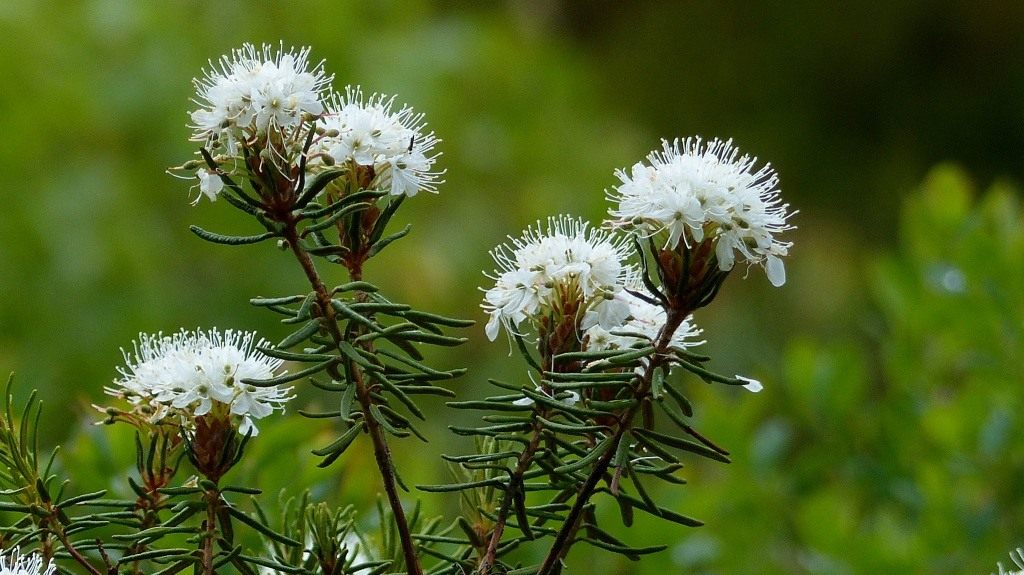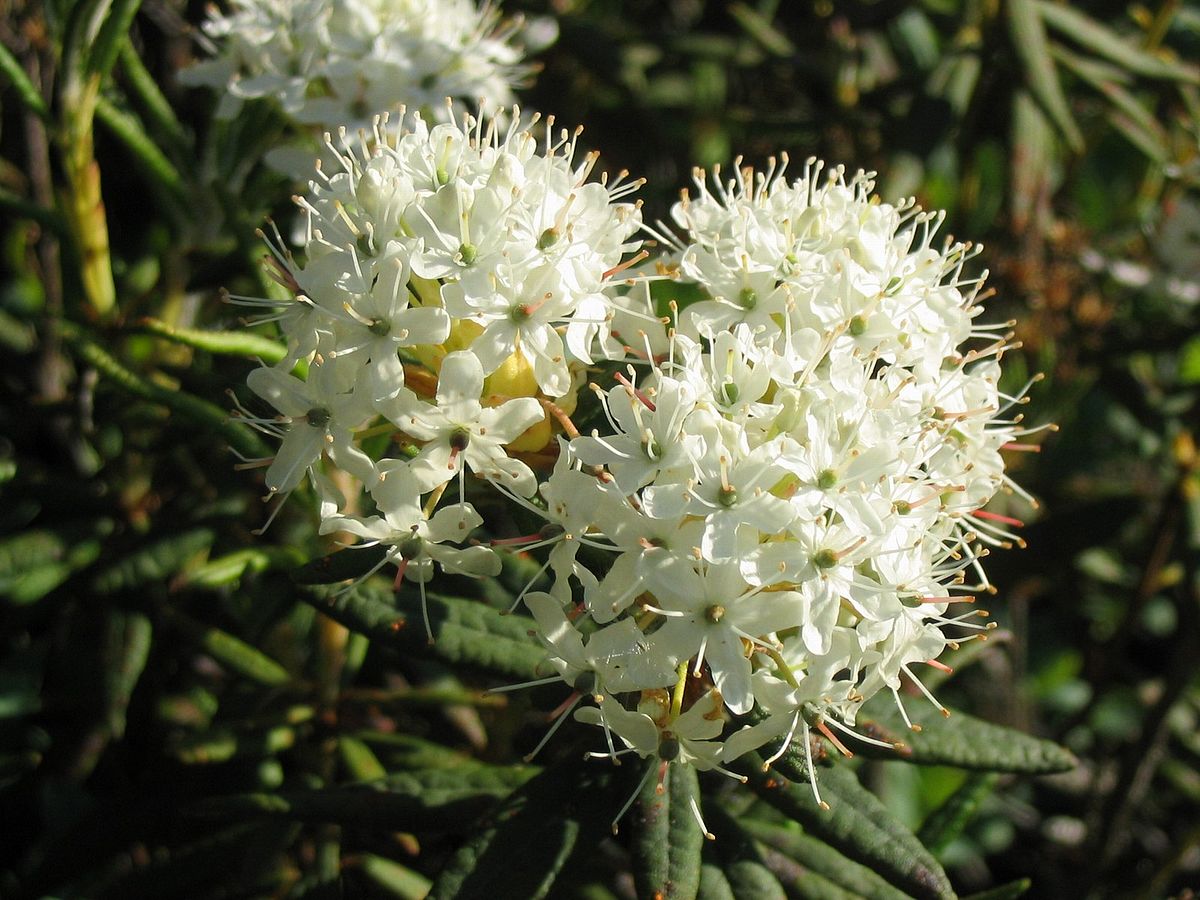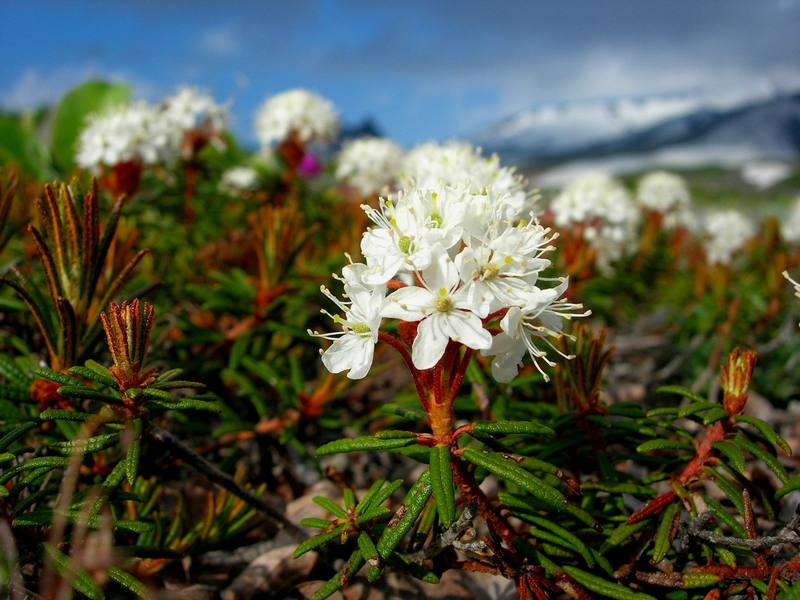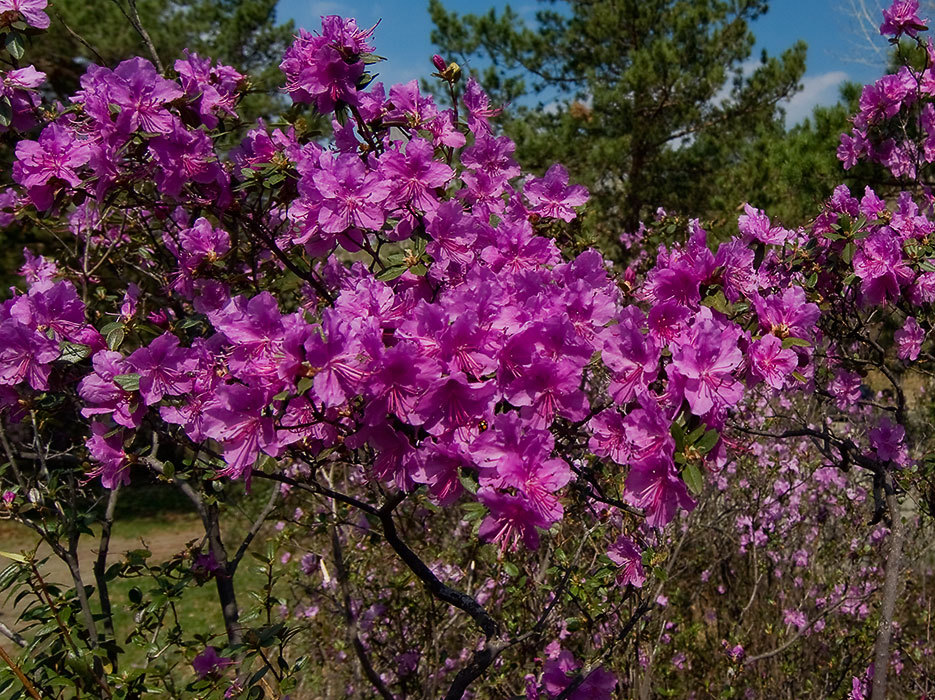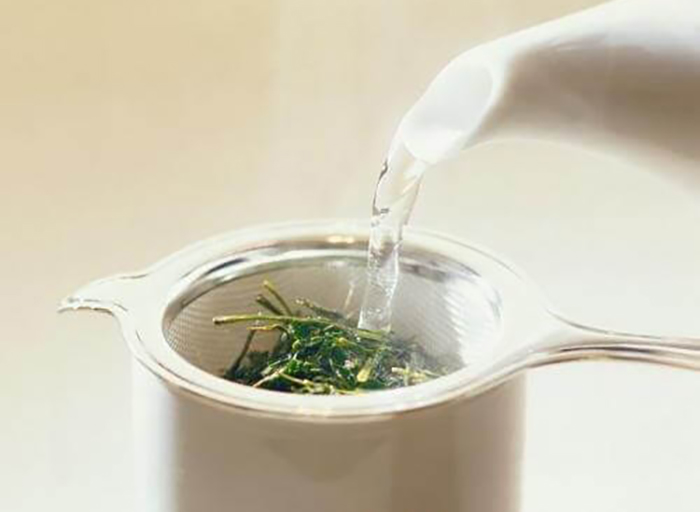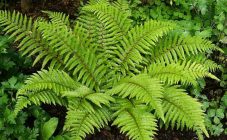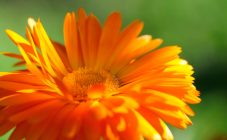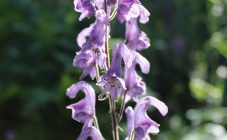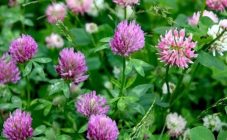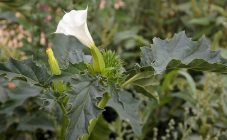Content:
A low flowering shrub with white flowers that grows in wetlands, peatlands and tundra throughout the Northern Hemisphere. The medicinal properties of wild rosemary have a fairly wide range of action on the human body. The plant is used in the form of various decoctions and infusions for a number of diseases.
Description of wild rosemary
The flowering evergreen plant belongs to the Heather family. Popular names - swamp dope, forest or wild rosemary, fragrant bagun, bagun. It is a sprawling shrub with a height of 60 to 80 cm.
The rhizome is well developed, it grows into the soil to a depth of about 50 cm. The stems of the wild rosemary can be erect, ascending or recumbent, which during the growth of the plant take root in moist soil. The bark of young shoots has a rusty brown color with tomentose pubescence, the old branches are gray-brown and bare.
The leaves of the plant are oblong. The inflorescences are connected in umbellate racemes or scutes. Flowers of white or reddish hue exude a strong stupefying aroma. The grass begins to bloom in May, the flowering time continues until July.
Most people in Russia have never seen wild rosemary bloom. Meanwhile, this is a truly amazing sight. The rosemary blossom is similar in beauty to the sakura blossom in Japan. Flowers are small, but there are a lot of them on a branch of a bush. And when it blooms, it is covered with a pink, slightly purple cloud.
Ledum species
The herb is quite common in the wild. There are only eight wild rosemary varieties - all are perennial evergreen shrubs. Only five species are grown as a cultivated plant.
Greenland wild rosemary
This species is widespread in the Arctic region. Occurs in peat bogs, on coasts and rocky slopes. Reaches a length of 50 to 100 cm. The leaves are wrinkled from above, dark green in color, covered with pubescence from below, red-brown color. In nature, wild rosemary herb has good frost resistance.
Marsh Ledum
It is considered the most common type. In nature, it can be found in a swamp, in the highlands, in coniferous forests, where it can form voluminous thickets over a vast territory.
A highly branched shrub reaches a height of 50 to 120 cm. The umbrella raceme accommodates up to twenty small flowers. The leaves are dense, dark green in color.
Ledum creeping
It differs from its relatives in its greater stunting. It grows in length only by 20 - 25 cm.
The homeland of the plant can be considered the Far East, Eastern Siberia, Chukotka, Greenland. Occurs in moss bogs, deciduous forests and on the slopes of hills.
Blooms irregularly during the season and grows very slowly.
Large-leaved wild rosemary
The indigenous inhabitant of Korea, Japan and the Far East has large leaves. As it grows, it can reach a height of up to 80 cm.
It grows on mountain slopes and on rocky terrain.Some growers attribute the Far Eastern wild rosemary to this species, but this is just a distant relative called the Daurian rhododendron. It differs in the presence of flowers of a rich pink hue.
The rosemary herb with pink flowers looks very beautiful in compositional variations. It grows in the regions of Transbaikalia, in Asian countries to the east of the Altai Mountains, in Japan, and Northern Mongolia.
The height of a perennial can reach up to 1.3 meters. The plant blooms in May, the flowering period lasts until mid-June. The seeds ripen at the end of August.
How marsh wild rosemary reproduces
In the wild, the plant reproduces successfully by seed. But, if you wanted to plant marsh rosemary in the garden or in the summer cottage, then preference should be given to the method of division or cuttings.
- The seeds are in small capsules that hang from the stalks of the plant. They need to be sown in early spring in a prepared container filled with soil with sand. It is best to take the earth loose and sour. The container should be placed in a cool place. The first shoots will appear after 3 - 4 weeks. After sowing, you need to regularly water the soil with rain or settled water.
- Reproduction by layering is the simplest method. Young thin shoots are tilted to the ground and sprinkled. Be sure to add peat for better rooting. Regular watering will allow the plant to develop quickly and correctly.
- The division of the bush is carried out in early spring. The shrub must be dug up and divided into independent parts, each of which must be planted in a separate hole. Then the plantings need to be covered with mulch with the addition of peat.
- Cutting requires additional skills, so it is not very common among gardeners. The procedure should be carried out in the summer. Semi-lignified stems are cut into pieces about 5-6 cm in size. The lower leaves are removed - only a few upper leaves need to be left. For more successful and quick rooting, it is first recommended to keep the cuttings in a special root-stimulating solution for about a day. Then they are planted in a prepared box or other container.
Culture properties
Marsh ledum has a variety of properties. It is widely used in both traditional and folk medicine, homeopathy and pharmacognosy.
The medicinal properties of the wild rosemary herb depend on the amount of essential oil it contains. The higher the percentage of the content, the greater the therapeutic effect.
The indications for the use of decoctions and infusions of this herb are quite extensive. It is successfully used as an expectorant, diuretic, anti-inflammatory, antiallergic agent. Before starting treatment with this plant, it is necessary to study the characteristics of the culture. Uncontrolled use can cause serious harm to the body.
Diseases and pests
The presence of a sharp intoxicating odor and high toxicity make the grass completely resistant to diseases and all sorts of pests.
The use of wild rosemary
Dry leaves of the plant are suitable for scaring away or fumigating places where flies and mosquitoes congregate. It can be safely called a home insecticide.
Dry twigs or plant powder are great for moth repelling. You can put a branch of wild rosemary in the closet, and you can forget about unpleasant guests for a long time.
The herb is often used in leather tanning, perfumery and soap making. In addition to the healing effect for humans, the plant has a healing effect on animals, therefore it is widely used in veterinary medicine.
In the garden and on the site, the plant is used as a decorative decoration. When wild rosemary blooms, the shrubs look aesthetically pleasing and attractive.
